
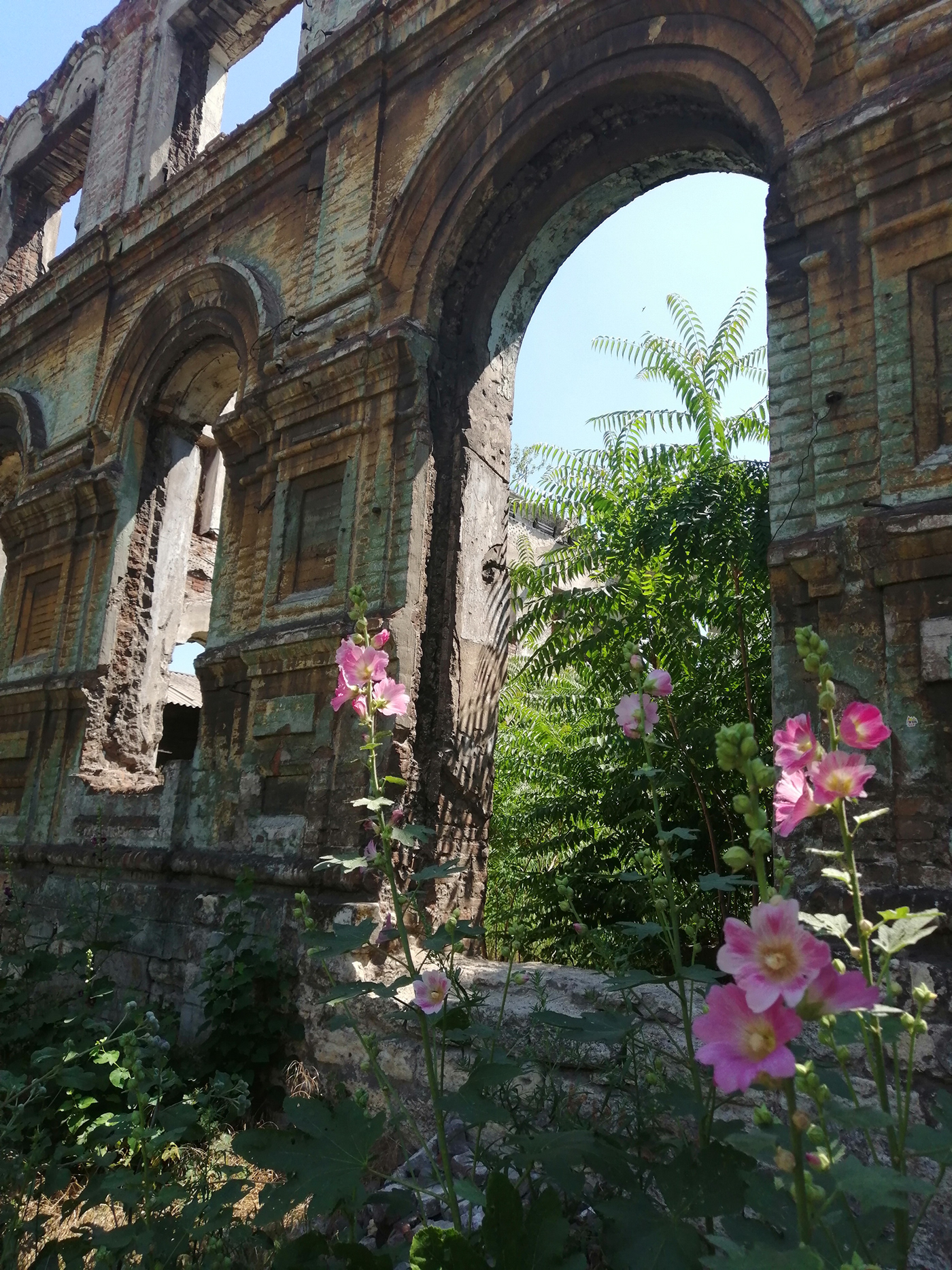
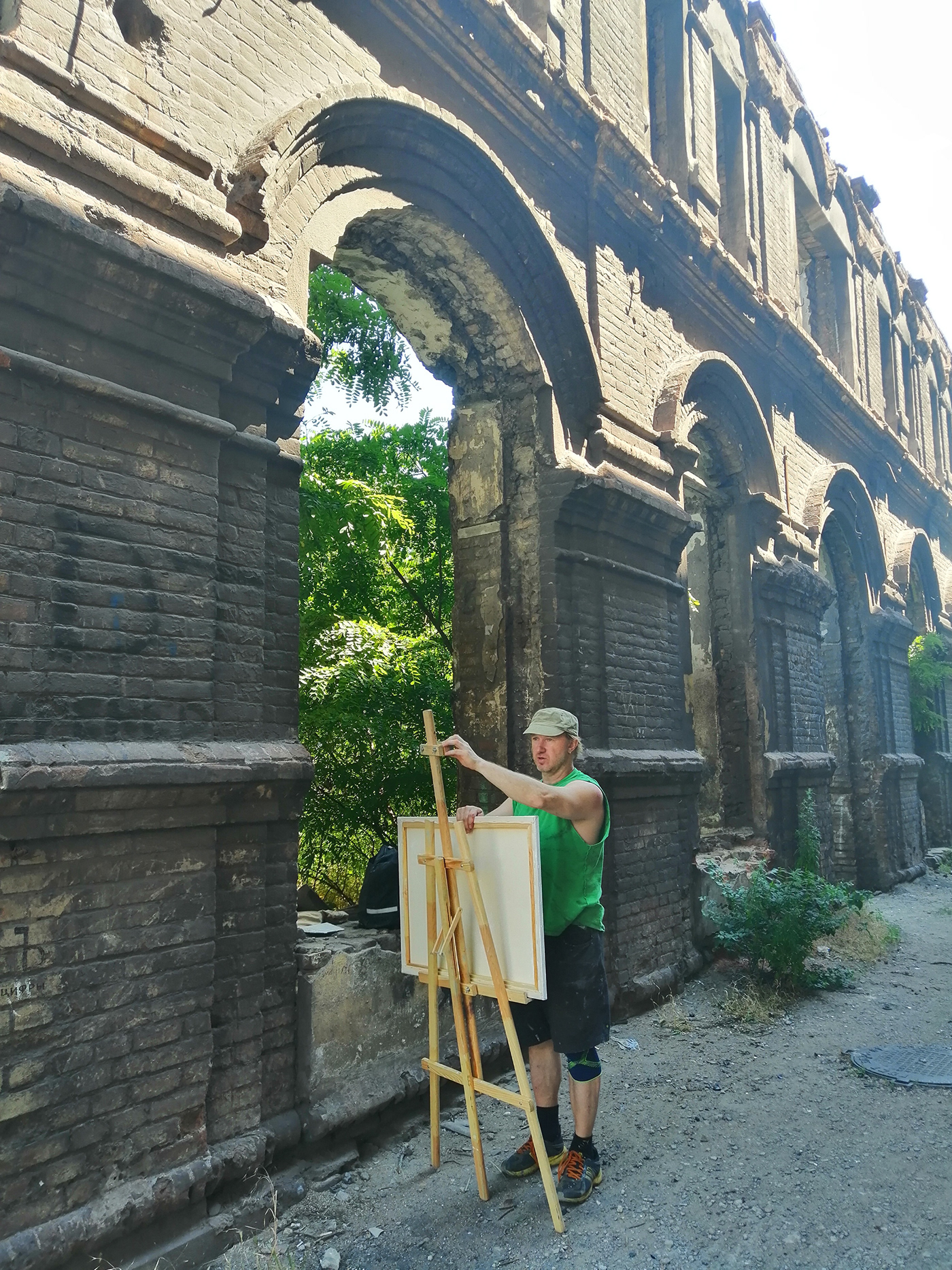
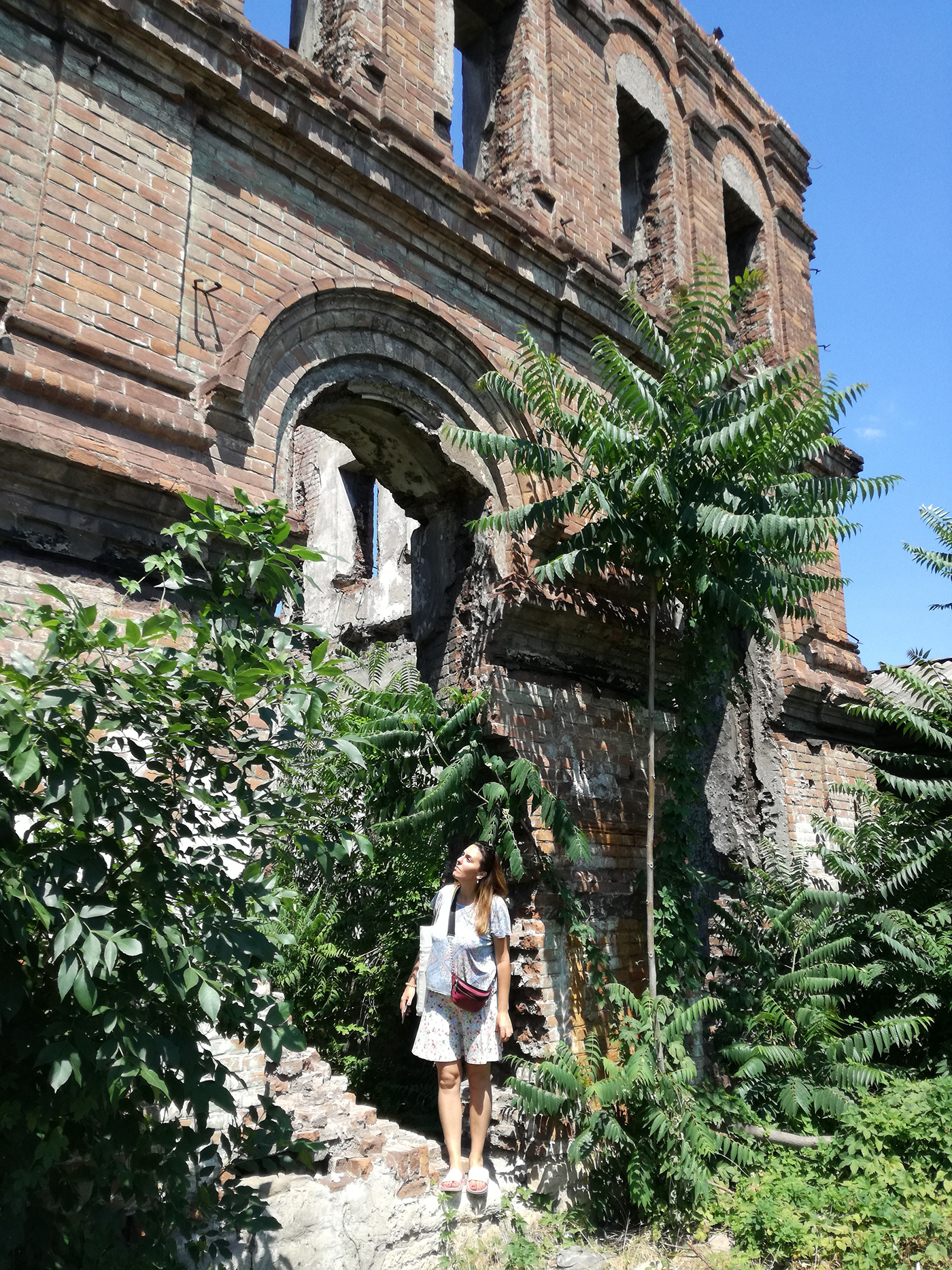
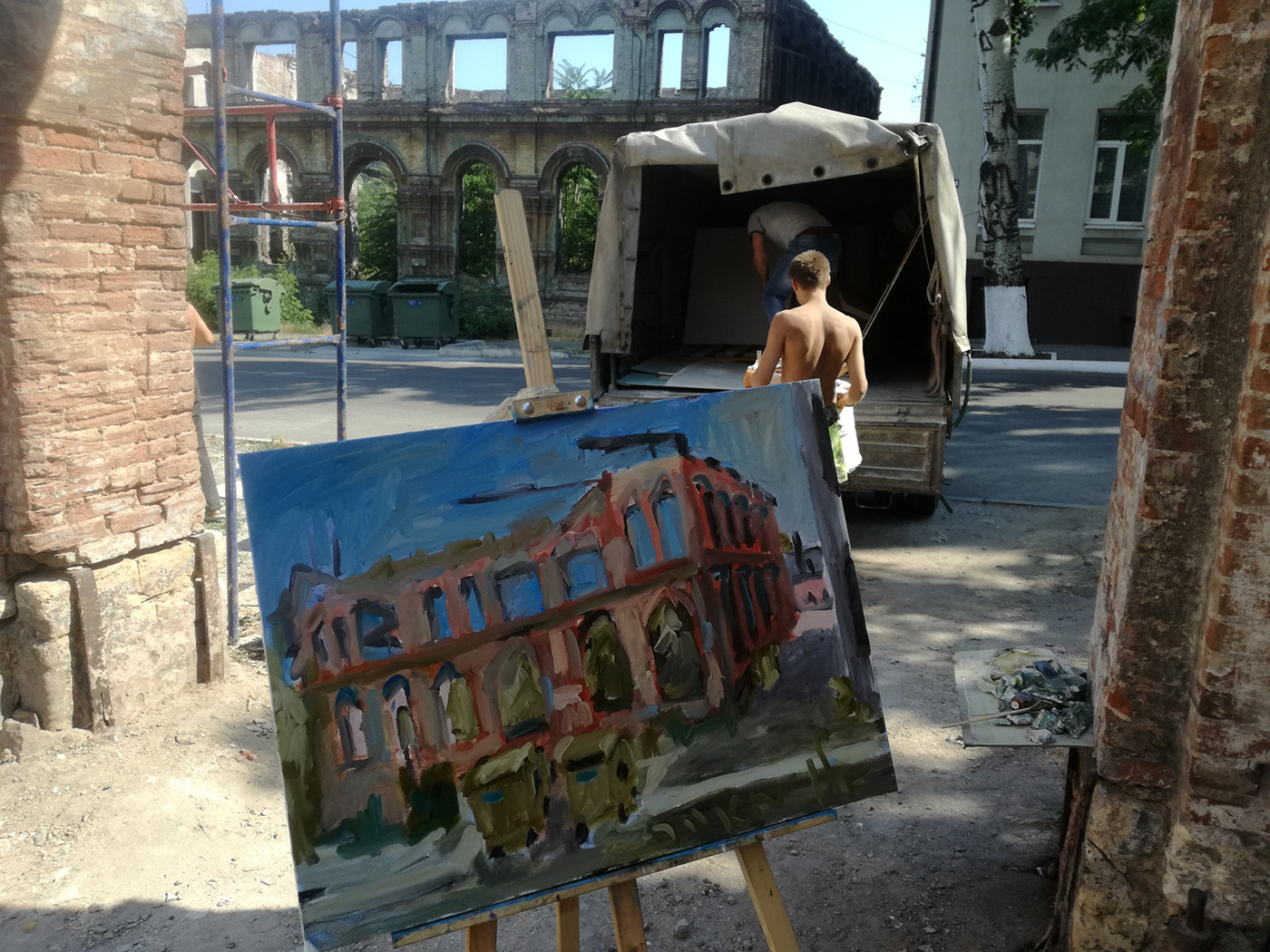








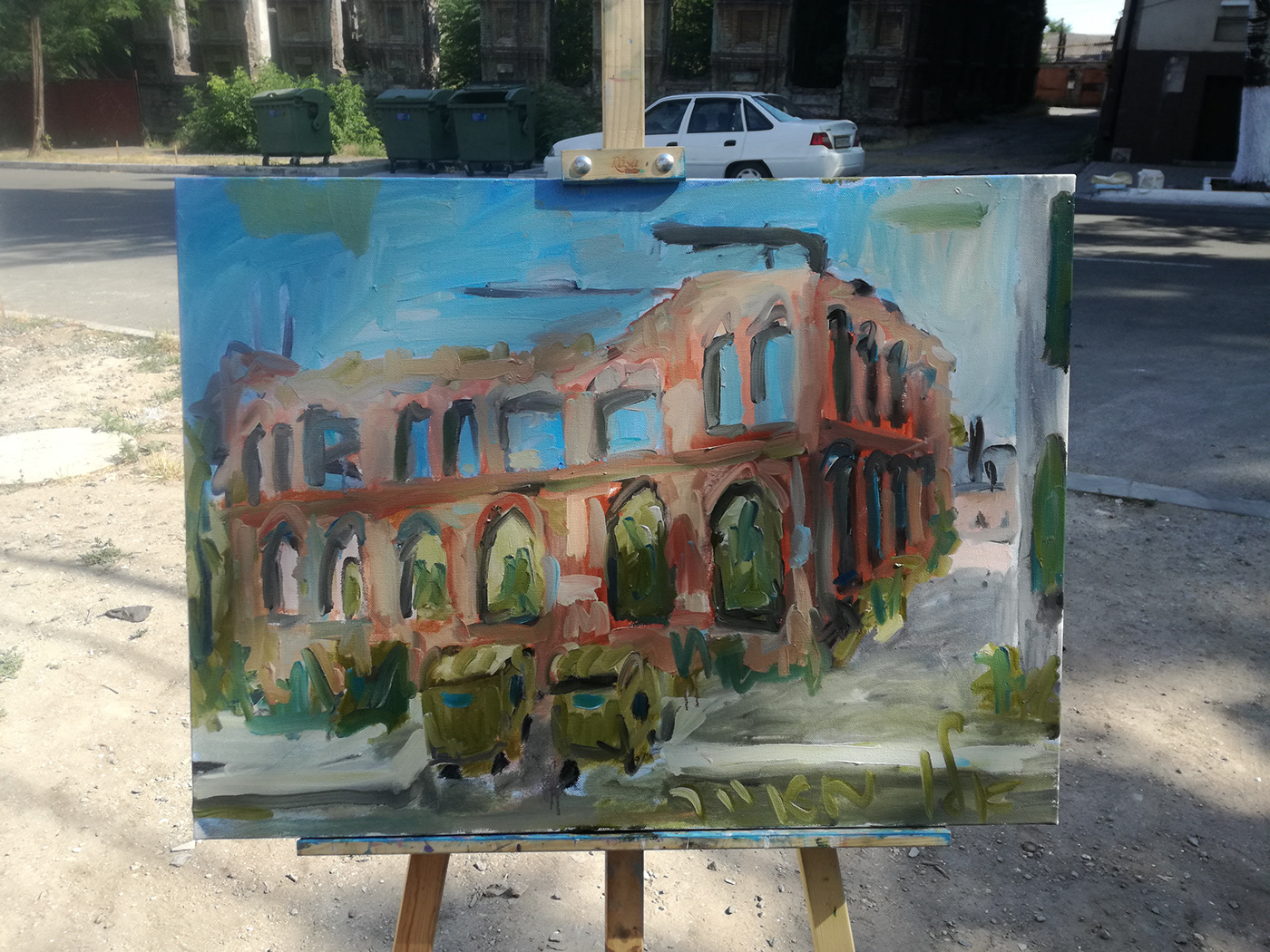
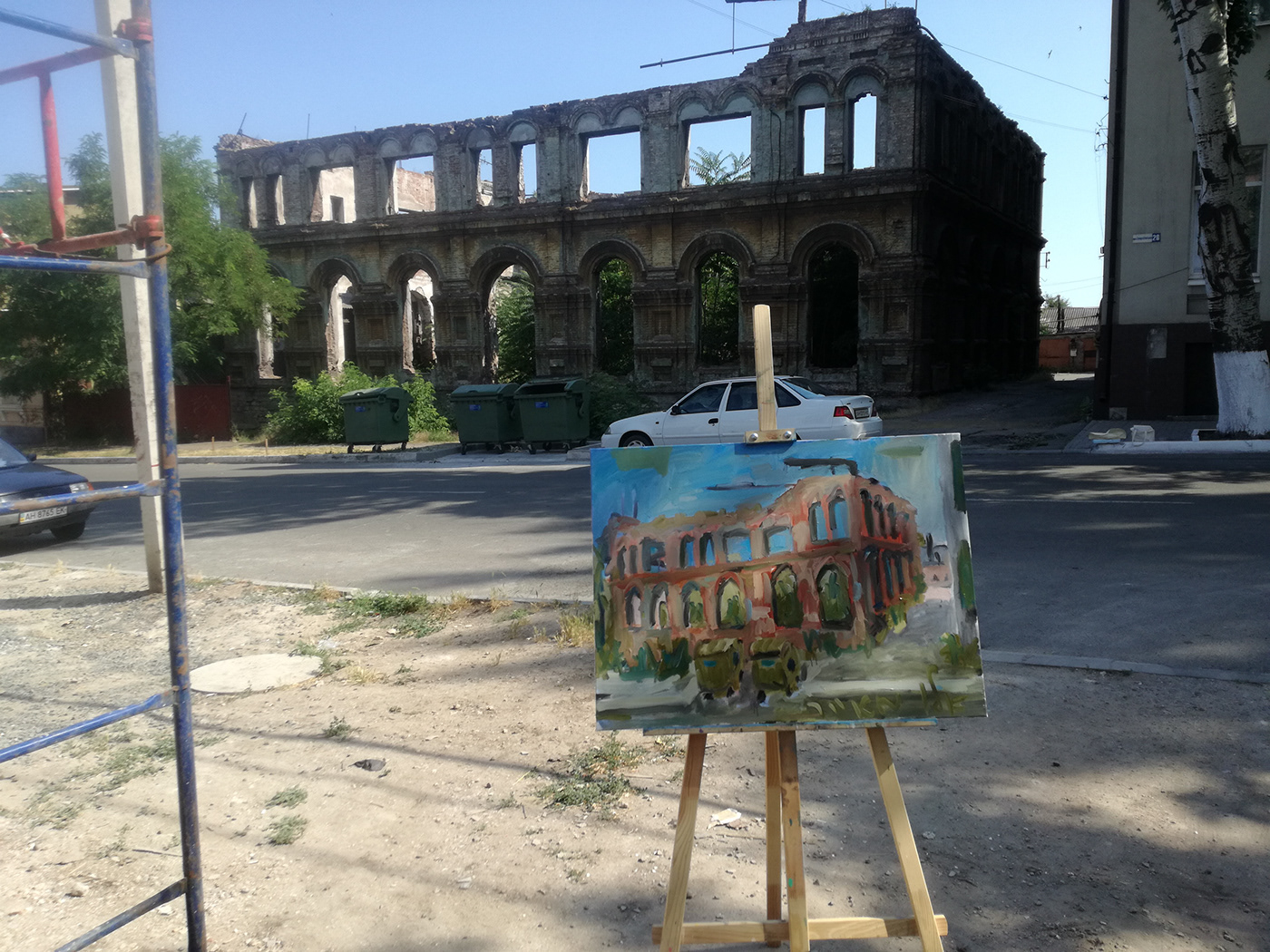


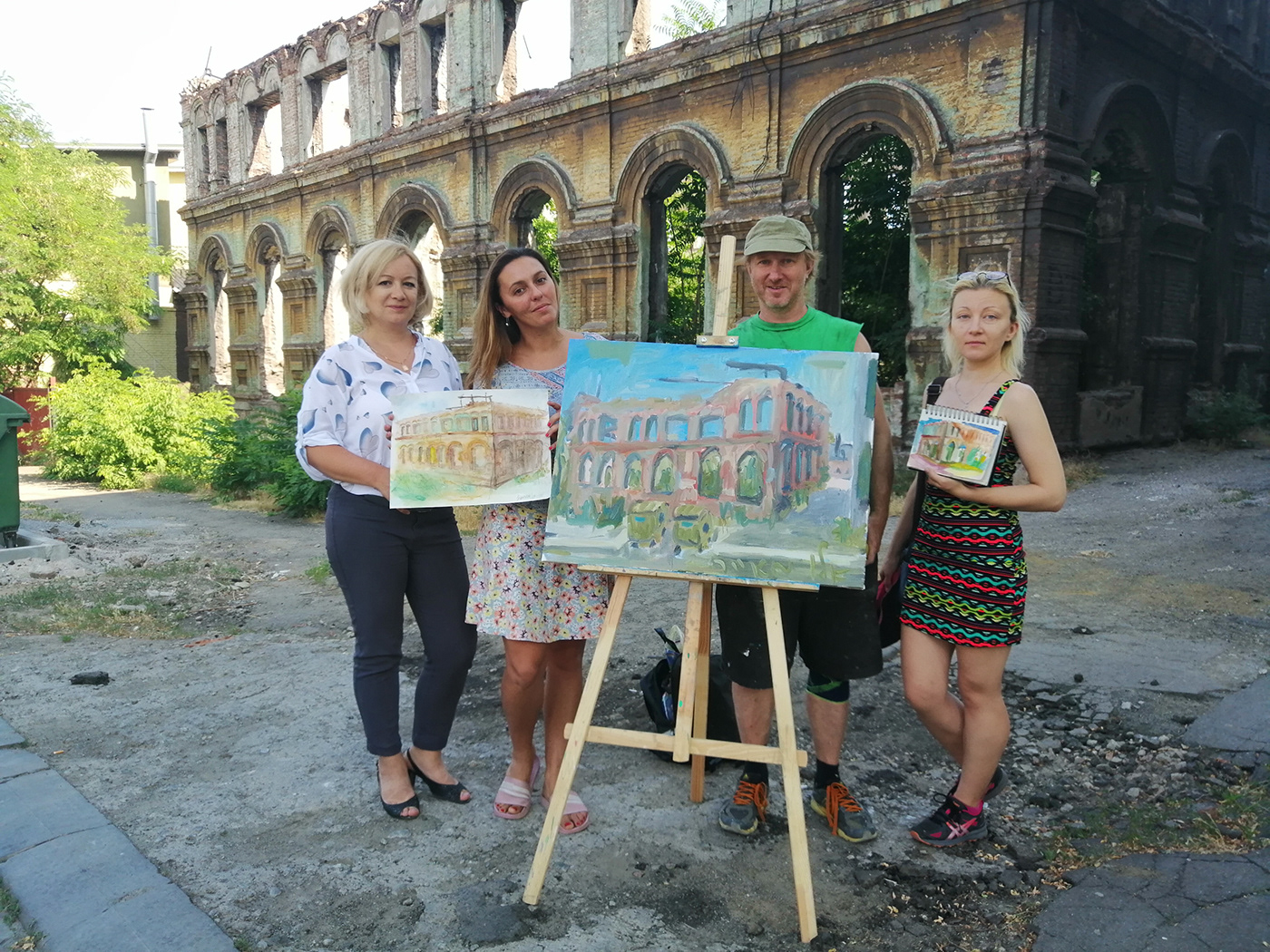
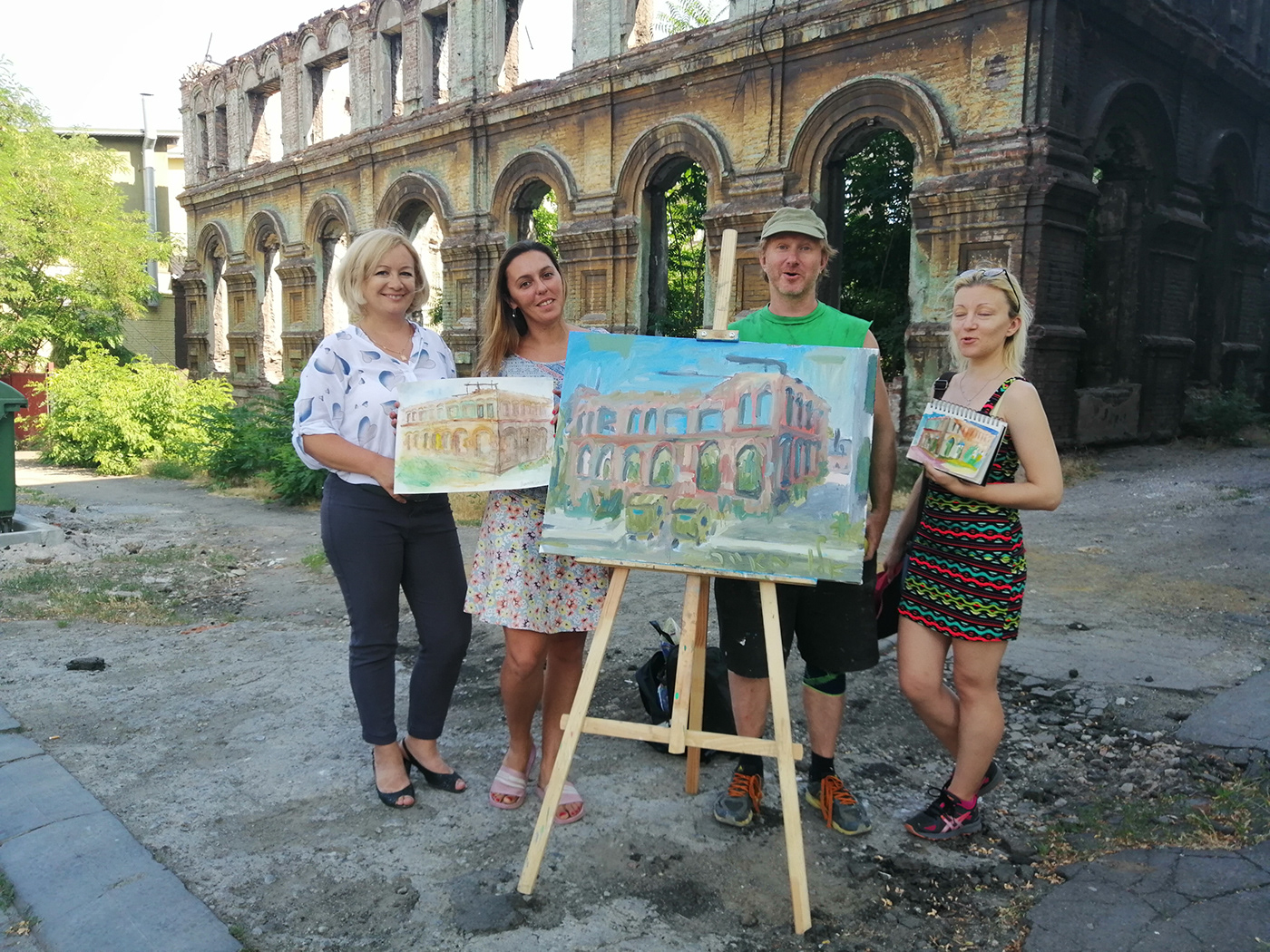

The last location of June plein air in Mariupol has became the ruins of the Synagogue on Georgievskaya 18. The history or the legend tells that Synagogue built in the 1882, was later partly destroyed by the then retreating Nazis, and later utilized in different, not religious, capacities. The usual soviet neglect for historical heritage had its toll: the overlooked construction had collapsed under heavy blizzard in the 90th. In this way it had stayed since then as the Coliseum in Rom, with the tendency to further obliteration. There, next to those ruins, we’ve made our last stop to catch the dying piece of history with our plein air session. In the future we hope to do it again and may be some day this construction would be restored, if not completely but at least preserved from further damage as were preserved the Synagogue in Berlin on Oranienburger Straße.
"History of Mariupol Jewish Community
The first Jewish settling in Mariupol refers to 1820.
The number of Russians, Greeks, Jews, Ukrainians and other people who were eager to settle in Mariupol encreased greatly after the Crimean War when rapid economic revival began.
At first Mariupol Jewish Community prayed in hired accommodation and only in 1864 was able to build a prayer house…
So the first prayer house was open in 1864 (Kharlampievskaya 5) which was reconstructed after some time and got the status of Khoral Synagogue, there was “Mikvah” in the yard.
In 1882 in Georgievskaya St. 18 in numerous Jewish Community’s initiative the second synagogue appeared, it was situated at the house of a tradesman, Anton Chabanenko. Some time later it became the main Khoral Synagogue of our town. One of the outstanding initiators of opening the synagogue was I.I. Averbah, the father of the famous academician M.M. Averbah, one of the creators and the first director of the Institute named by Geimegolts, Lenin ’s doctor.
Because of the Jewish population encrease the necessity of building new prayer houses appeared.
So the third synagogue in Italyanskaya St. was built but the information concerning it almost vanished.
In the middle of 1890s opposite the Khoral synagogue with the efforts of “Spiritual Government” a two-storeyed building was build entended for opening Talmud-Torah ( lower educational institution for poor Jewish children ) in it on the upper floor and a mikvah on the ground floor.
Talmud-Torah was founded by former members of Mariupol Jewish Community M.A. Oguz and the rabbi Dean. Hebrew, Russian Grammar and elementary Arithmetic were taught at school.
At the turn of the ХХ century Jewish Community have already firmly settled down in Mariupol. The activities of its members referred to different sides of the local life. Those were trade, and industry, and service in state institutions of local self-government.
In Mariupol Jewish Community there was Funeral Brotherhood, founded by brothers Freiman in 1847. This brotherhood had a special book “Pinkus” where the foremen wrote down income given by members and Jews buried by the brotherhood.
Jewish Community also founded an asylum for poor Jews arriving at Mariupol. The asylum was situated in a small public house opposite the synagogue in Kharlampievskaya St.
In this asylum poor Jews had the right to stay there free day and night, and to eat at prosperous fellow-townsmen according to the notes of the asylum’s leader.
At the beginning of ХХ century at the corner of Italyanskaya and Bolnichnaya Streets a public matzo bakery was open, it made matzo of high quality.
And it’s interesting to know it produced matzo in such quantity that it could provide all Jewish population of the town and its suburbs.
There was also a Jewish hospital in Mariupol, which was situated opposite the Urban Garden. There worked a famous doctor Ochakovskiy M. N. who also was a Community Chairman of poor Jews’ granting. The Community of helping to craftsmen of Judaic religion was also known.
Fatal 1930s touched Jewish population of Mariupol. Many Jews were shot and subjected to repression together with Russians, Ukrainians and Greeks.
In 1933-1934 when local churches and cathedrals were destroyed, some prayer houses escaped destruction, they were not destroyed, they were simply closed and given to other institutions of the town. Many prayer houses were destroyed."
Напротив, наискосок от дома с изразцами (Георгиевская, 18),из-за забора печально возвышаются руины бывшей хоральной синагоги, где в советское время были последовательно гимнастический зал, контора Ленинградского «Гипромеза», больница, медицинское училище, вечерне-заочная школа, школа юных моряков, очень может быть было здесь что-то и другое. Наконец решили разместить здесь картинную галерею. Было это в середине восьмидесятых годов. На этот счет было издано специальное постановление горисполкома, но пока искали средства на ремонт, случился необычный для наших мест снегопад, перекрытия крыши не выдержали тяжести снежного покрова и рухнули. Оставшееся без хозяина здание постепенно начали растаскивать предприимчивые горожане. Теперь оно доведено до такого состояния, что вряд ли его смогут восстановить.


